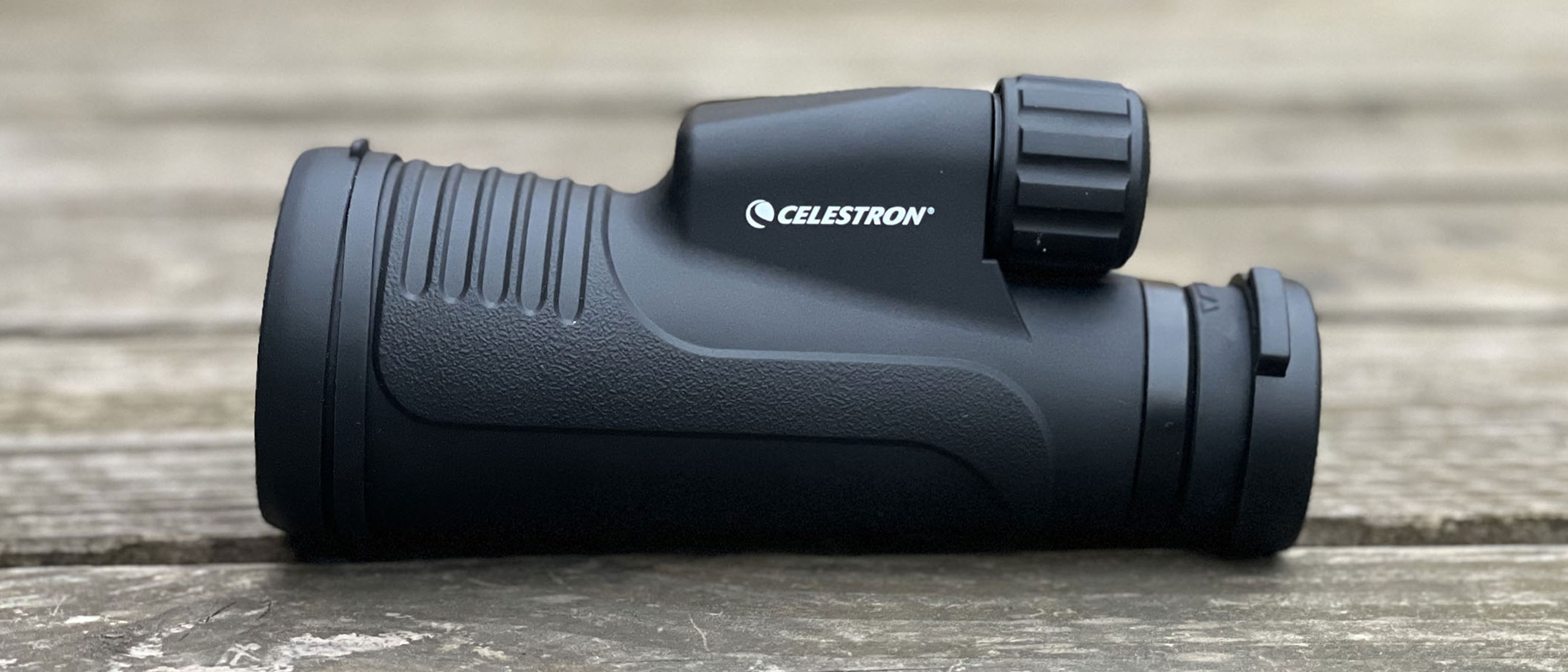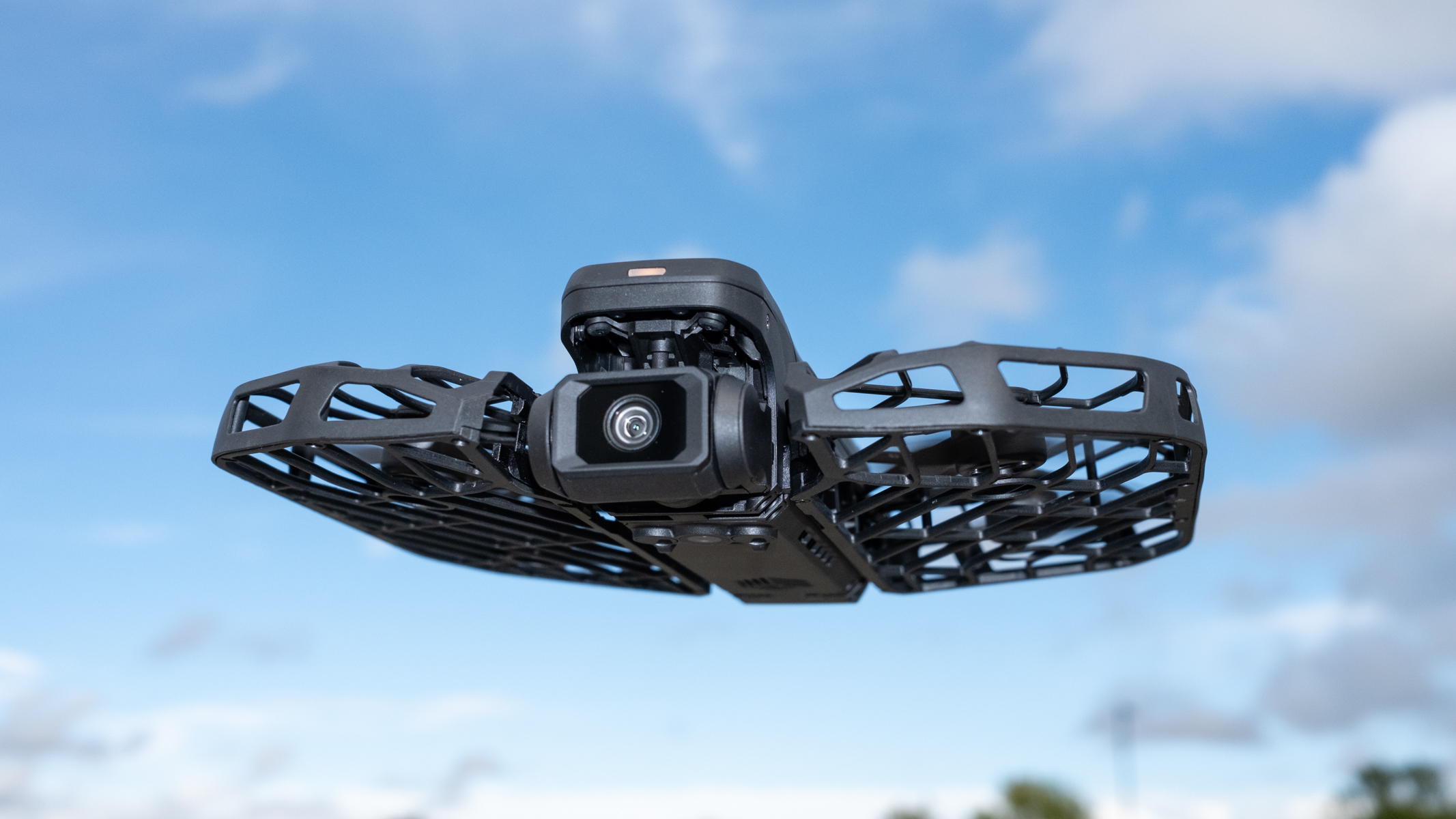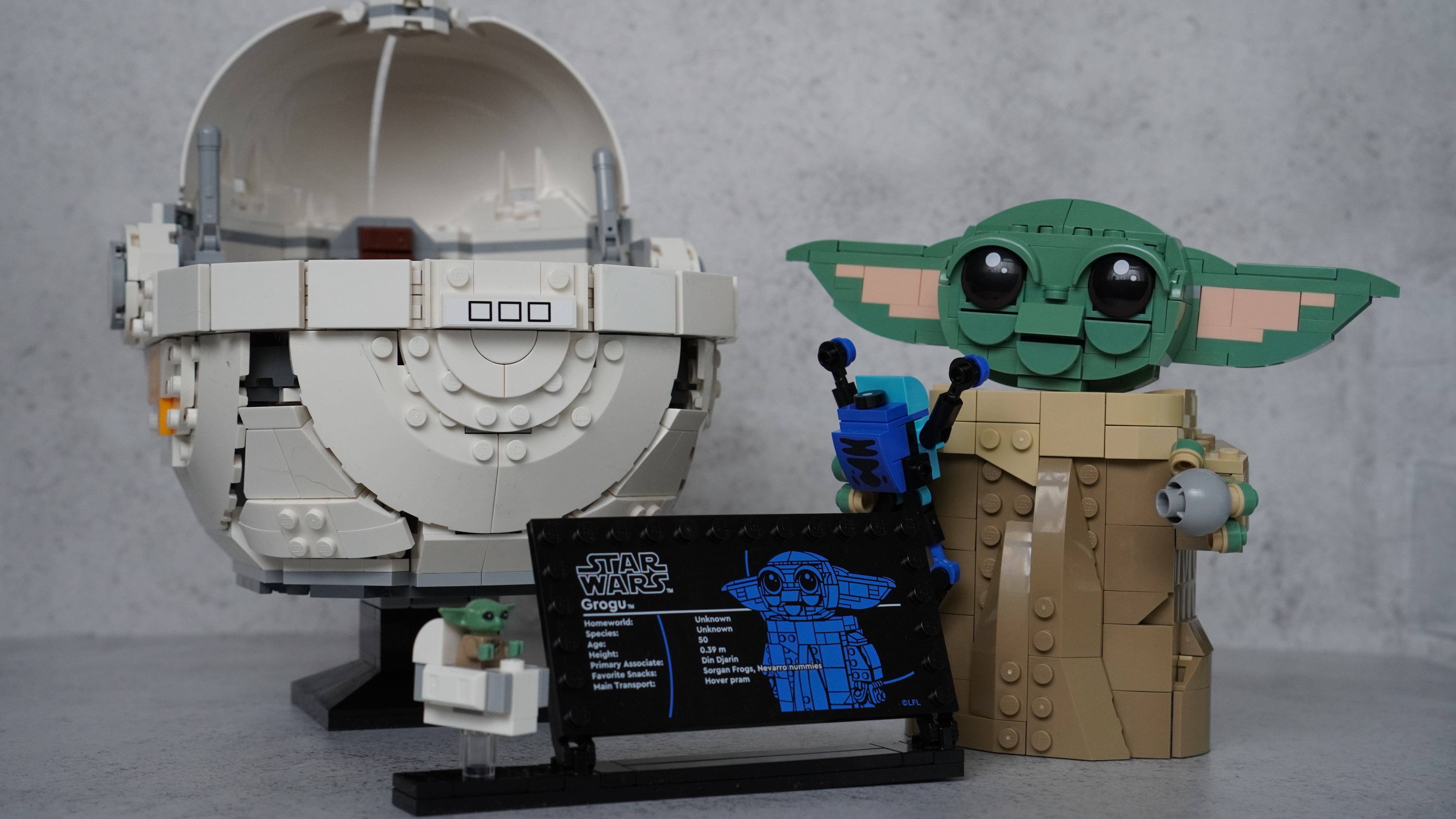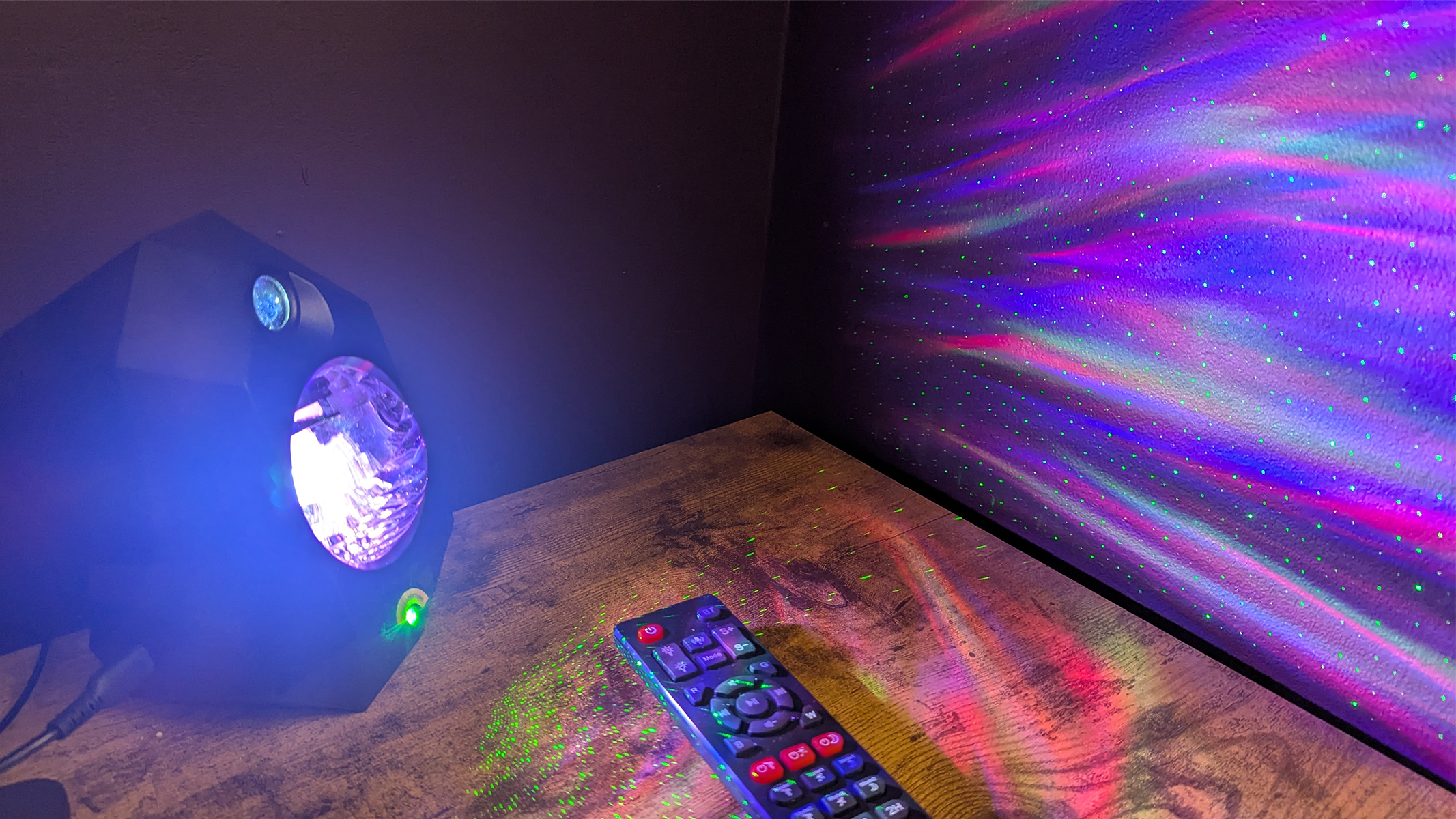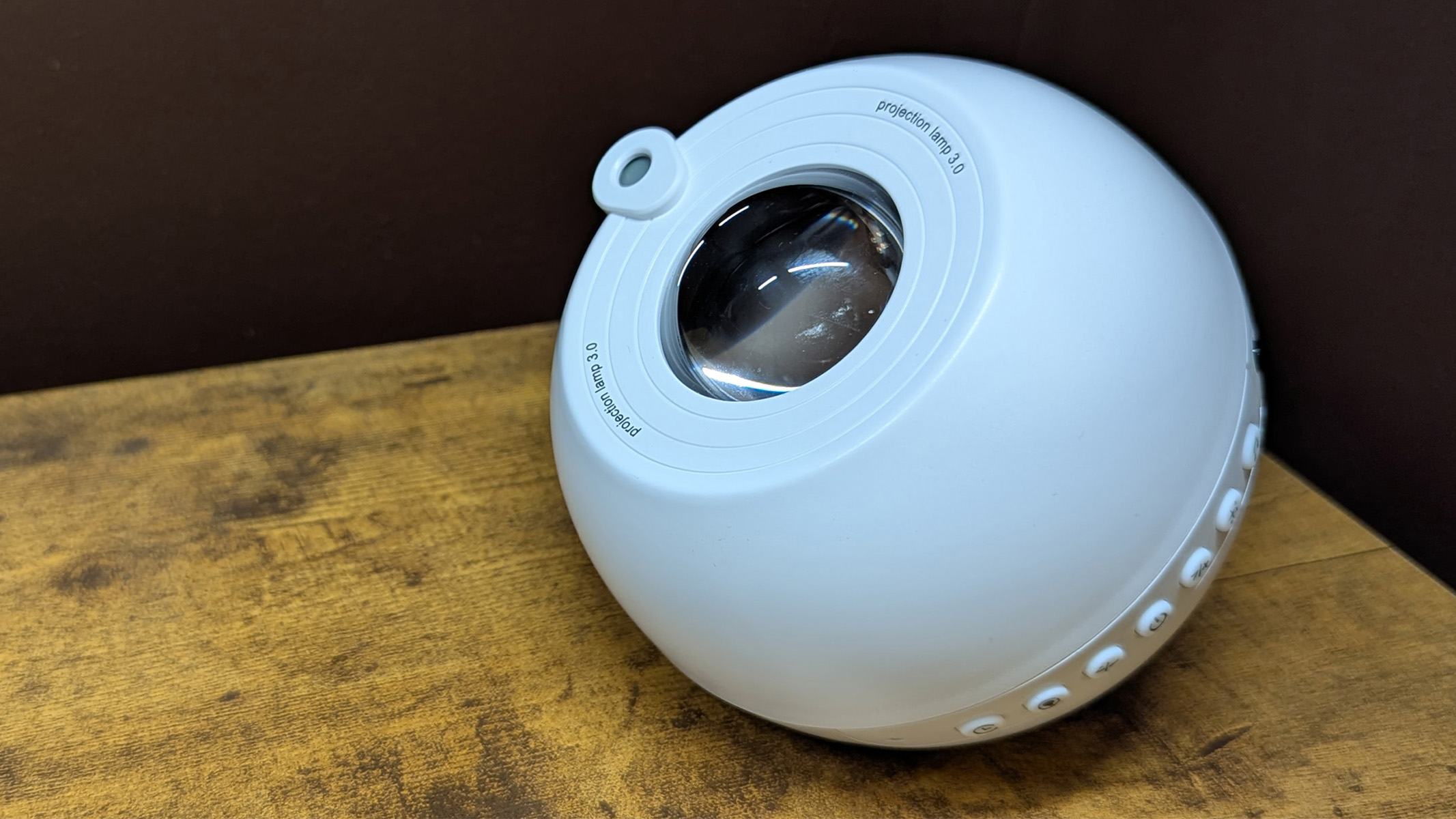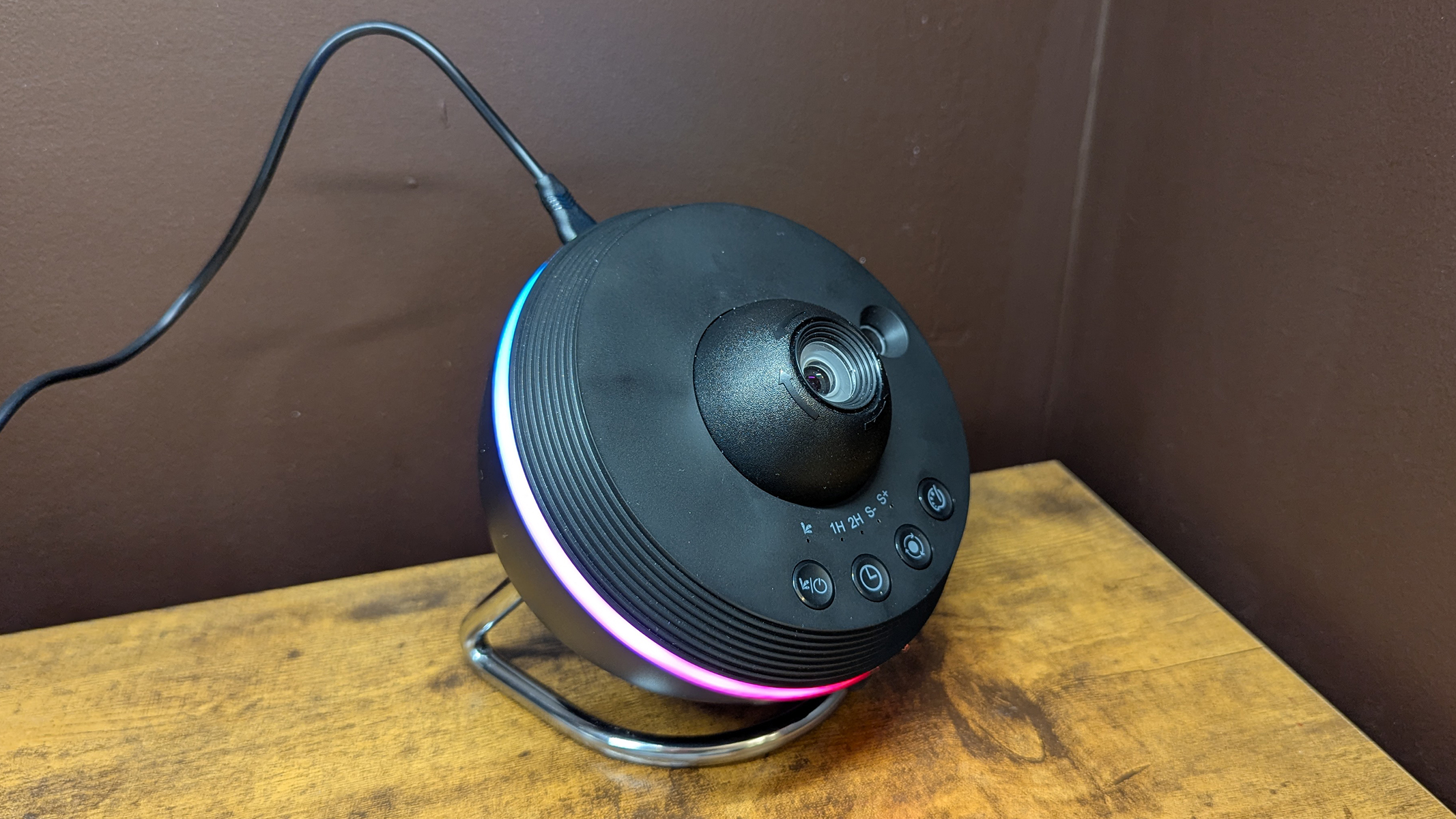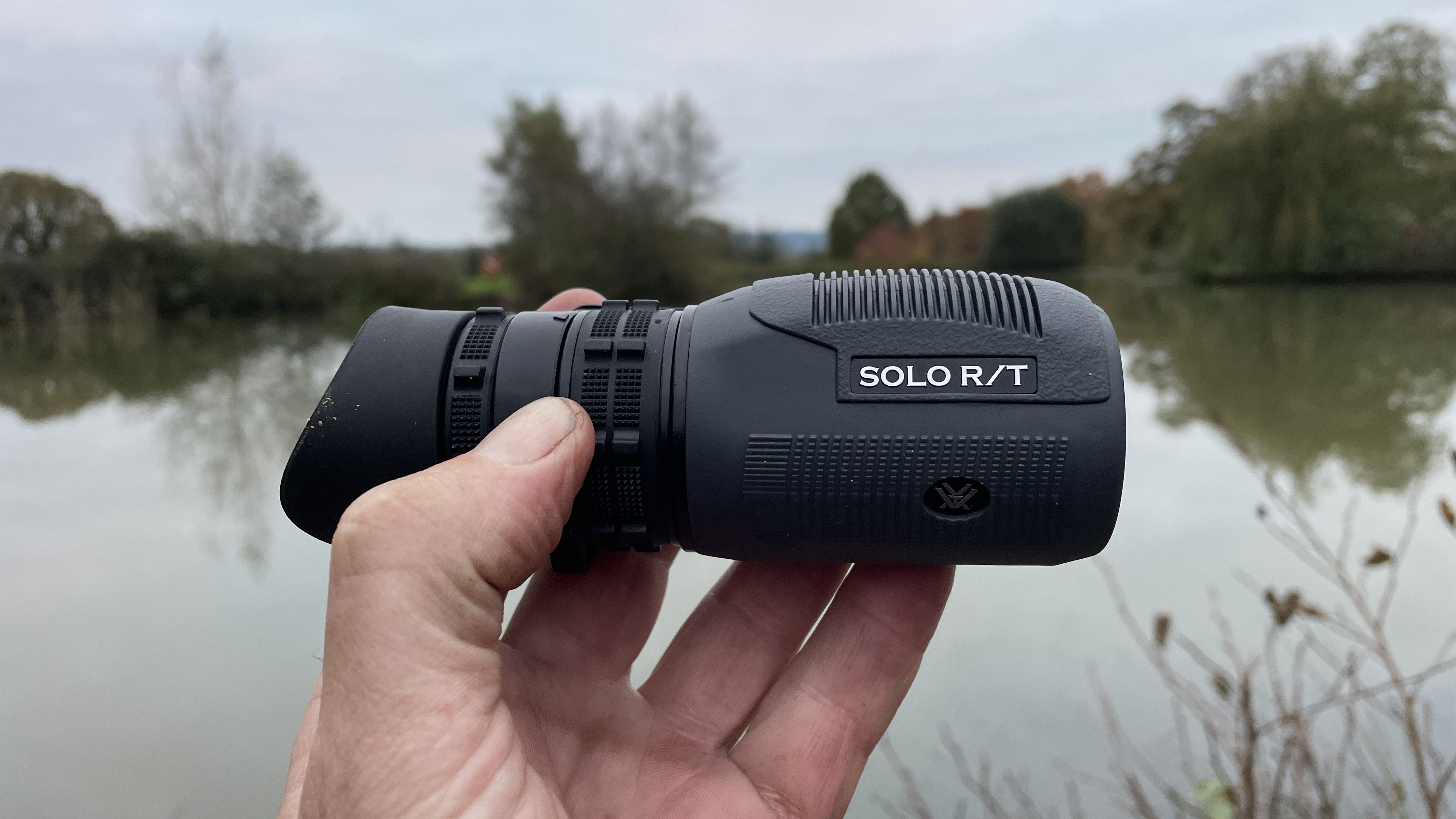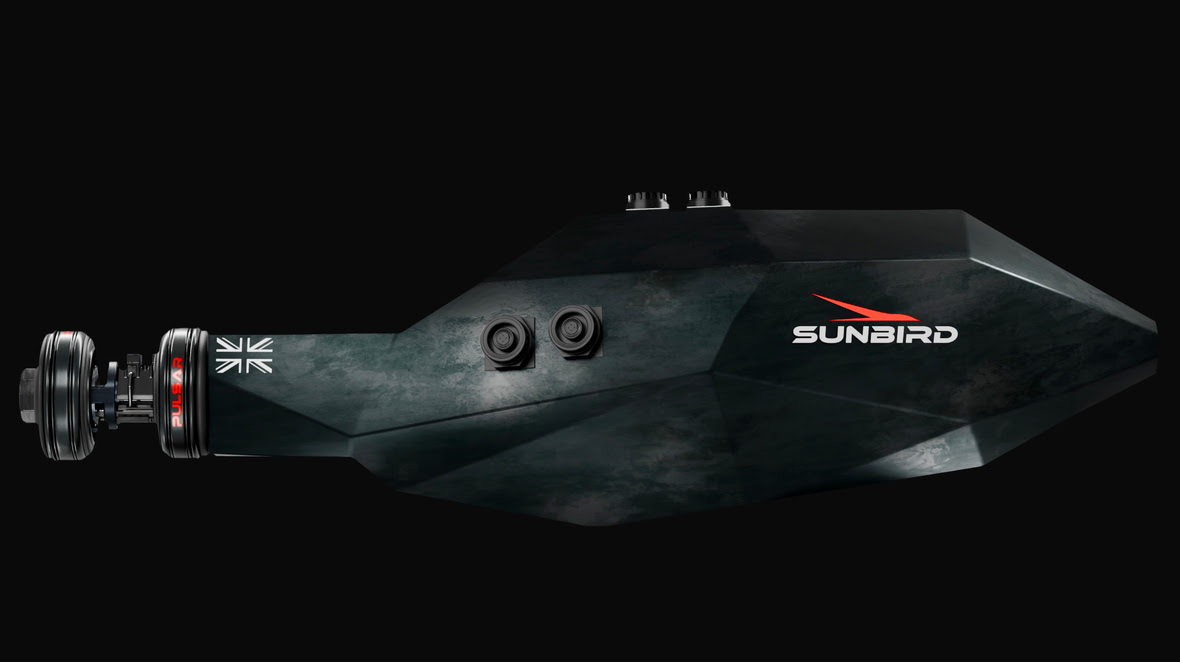Space Verdict
An excellent all-rounder at a competitive price point. The Celestron Outland feels very well made and is competent in use. With clear optics and a resilient build, it feels like it's built to last.
Pros
- +
Quality armored casing
- +
Small form factor
- +
Very smooth focus wheel
Cons
- -
Not the sharpest image
- -
Phone mount needs a tripod to work
- -
Not the lightest
Why you can trust Space.com
As soon as we started to test the Celestron Outland X 10x50 monocular, we were impressed with the quality feel and easy one-handed operation. The top-mounted focus wheel has a very premium feel, and we were impressed with the overall feel of the monocular at this price point.
The Outland X has a tough waterproof casing and is Nitrogen-purged to stop fogging. We used the Outland on some wet days, and these claims certainly appeared accurate. At one point, we dropped the Outland into the lake we were visiting, and it suffered no water ingress or other undue effects apart from the obvious lens cleaning and wipe down.
We found the 50mm Objective lens helped with low-light situations. Getting light to the eye also helped with multiple. coated lens and BaK-4 prisms. However, the 50mm objective lens has made the Outland quite bulky around the end of the barrel, meaning that it's too big for most pockets.
We found the Outland X to be a good performer at night for stargazing. It has a standard-fit tripod thread, which we recommend for night use to stabilize views.
Celestron Outland X 10x50 monocular review
Celestron Outland X 10x50: Design
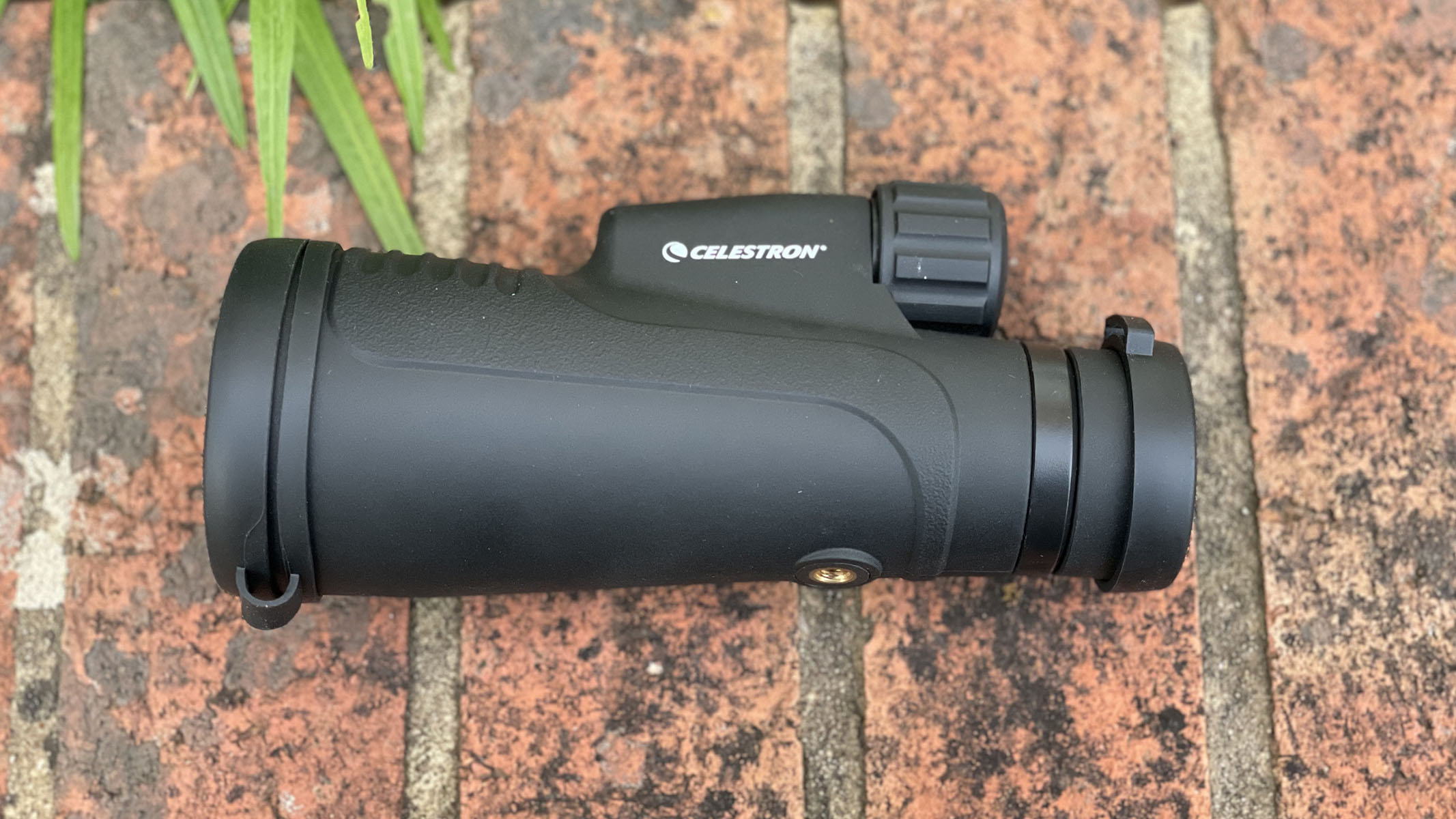
- Durable, waterproof housing
- BaK-4 fully coated optics
- Good light transfer
The Outland X looks like it means business, and to this end, we found it performed well. It's not the lightest mono, and it's a bit too big to fit in a pocket due to the 50mm objective lens making the end of the mono quite wide. That said, it's small enough for one-handed use. Plus, this 50mm objective makes it better for stargazing, drinking in more light from the distant and dim starlight to show up nebulas and asterisms with better precision.
The lens has multiple coatings to reduce glare and help light transmission, and the prisms are BaK-4 coated which all help with the transfer of light through the unit. Although these additions do help to create bright images, there is a limit to how far the manufacturer can push glass quality at this price point and we found the images aren't the sharpest.
The Outland X has a smartphone mount included which is a nice addition although in practice we found this quite difficult to use and the resulting images are somewhat of a mixed bag. It's difficult to mount unless the Outland X is mounted on a tripod and even with this, it's very fiddly to get a clear image. If your phone has anything but the thinnest of cases then these will have to be removed before inserting the phone into the holder. Once in place the clamp was often not tight enough and the phone would work its way out of the view of the lens. All of these problems were as mentioned before, alleviated by the use of a tripod, but this is very much more cumbersome and in general, takes away the convenient element of monocular use.

Design: Roof Prism
Magnification: 10x
Objective lens: 50mm
Eye relief: 16.8mm
Weight: 14.6 oz / 415 g
Dimensions: 6.5 x 3.3 x 2.4-in / 16.6 x 85 x 62 mm
Durability: Waterproof and fog proof
The Outland X has a three-position twistable eye cup with a comfortable rubber surround. This makes it accessible to buyers with or without spectacles. The objective lens cover is strapped onto the body, but the eyepiece cover has no attachment, and it would be better to put this into a pocket so you don’t lose it.
The Outland can be mounted on any standard photographic monopod or tripod for extended viewing or digiscoping. We found a tripod useful during the test, especially when using the smartphone mount.
We found that the Outland lacks a carry strap and a mounting point on the body. However, it includes a carry pouch with a belt clip.
Celestron Outland X 10x50: Performance
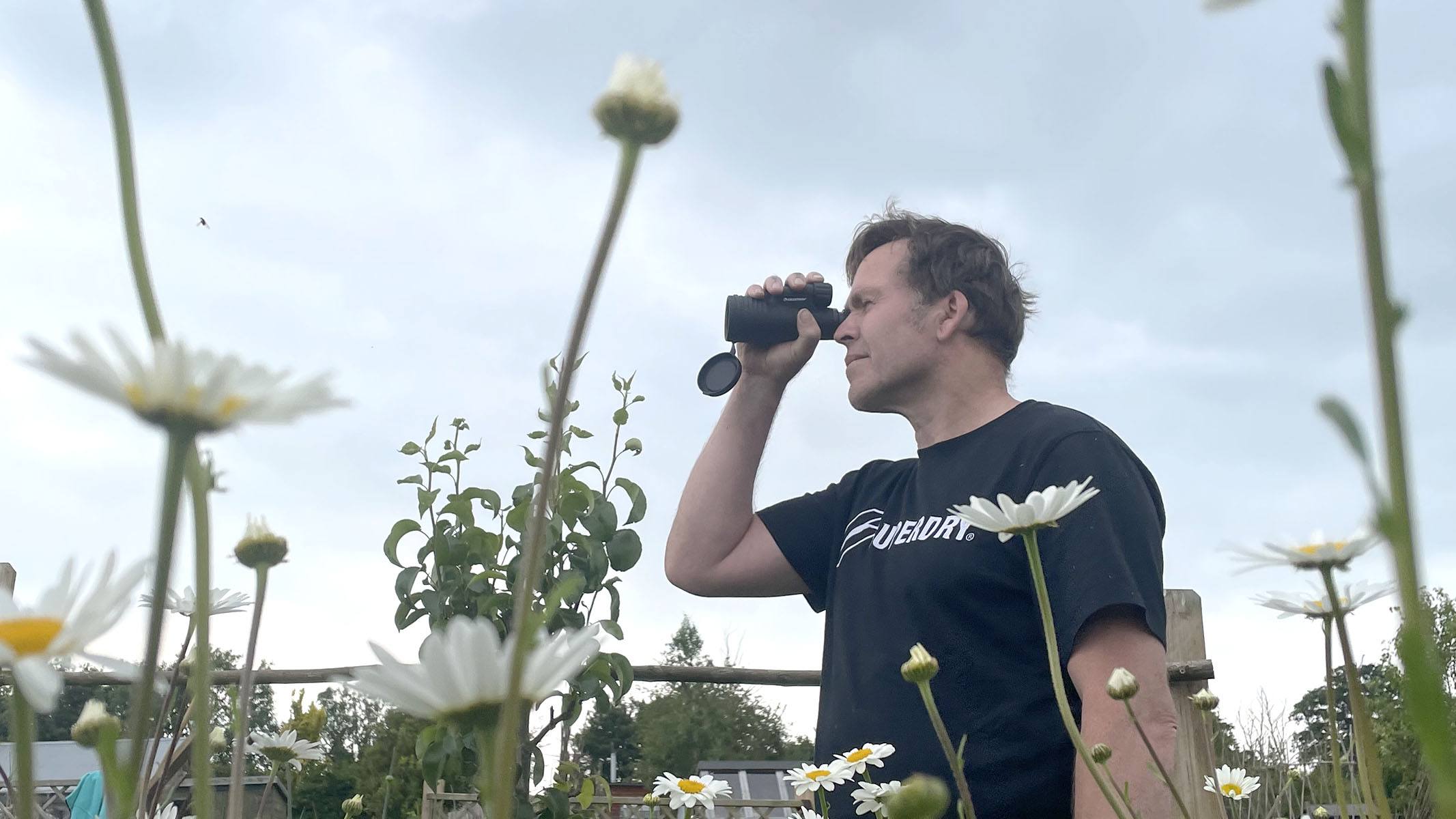
- Good low-light ability thanks to the 50m lens
- Not the sharpest image
- Sturdy construction
Monoculars at this price point are a careful blend of tight budget constraints. Although the Outland X performs well in all areas, we did notice that it doesn't have the sharpest image available compared to some of its higher-priced competitors.
Part of our test included birdwatching at our local lake. The Outland was sharp with subjects at a maximum of 50 m, but after this distance, things got a bit soft and indistinct. We feel this would be improved with greater magnification, but it was in this part of the test that we noticed the price point started to limit performance.
That said, the overall performance is pretty impressive. We particularly liked the wide 50mm objective lens, which lets in a little extra light over the more generalist 42mm standard in monoculars of this price point. This made night sky observations a breeze and we could easily spot the fuzzy haze of the Andromeda Galaxy (M31) during the lighter summer months.
We also found the top-mounted, easy-turning focus wheel to be very pleasant to use. The eyepiece has three stops, making using spectacles with the Outland a pleasant experience. However, we did find that even at the eyepiece's lowest setting, the field of view was significantly narrower than it was with the naked eye.
The Outland has a close focus range of 8.2 ft/2.5 m, making it possible to watch birds and insects at close quarters. Its exit pupil value is 4.87mm, and its objective lens diameter is 50mm, making it able to convey clear images in low-light conditions.
The Outland's body is well made, and grip levels are good, but the omission of a decent strap and the eyepiece cover not being attached to the body might put some buyers off.
Celestron Outland X 10x50 monocular: Functionality
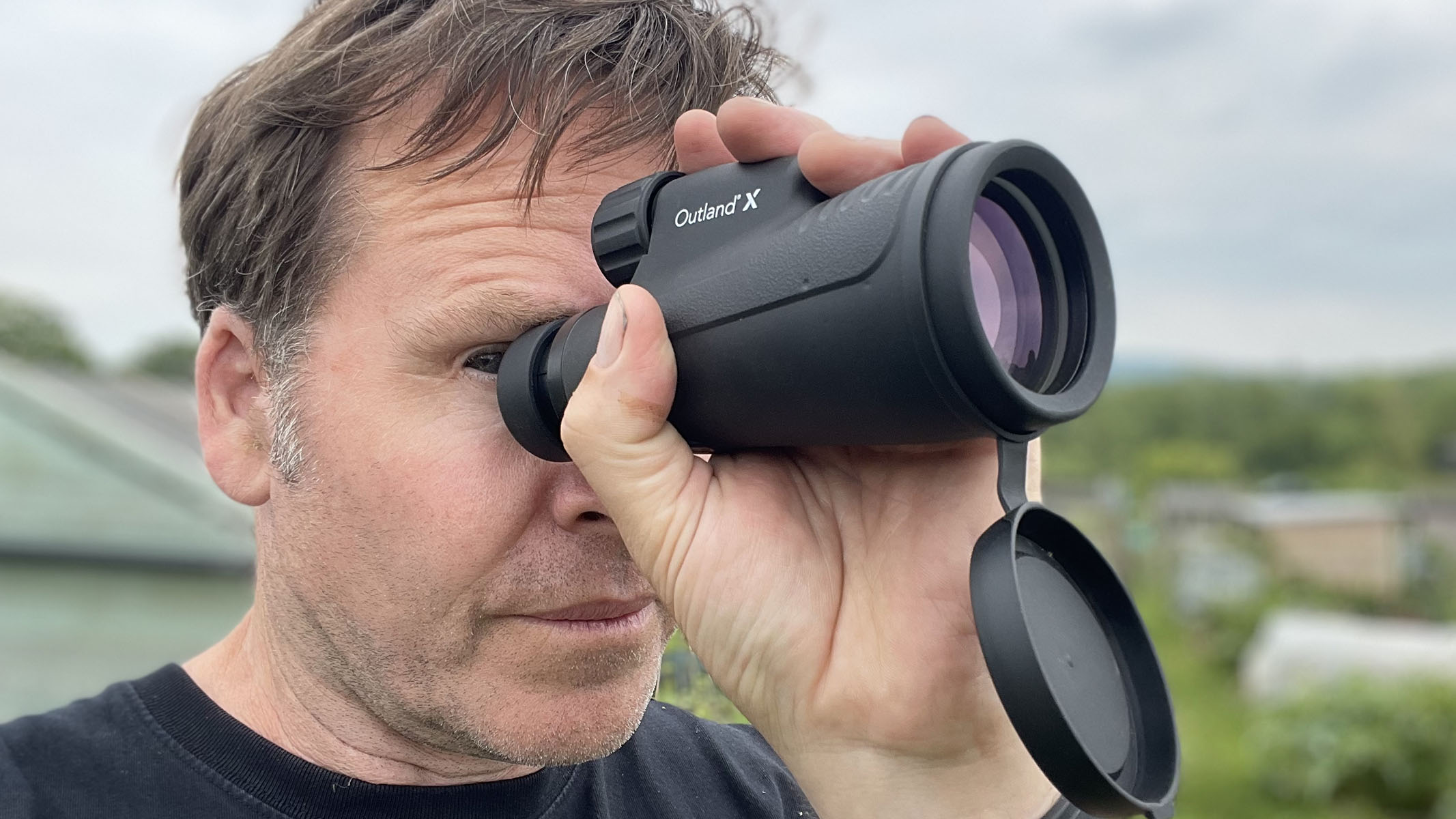
- Grippy rubber molded body
- No shoulder strap or mount
- Good image quality at close quarters
The Celestron Outland X 10x50 mm Monocular is a capable budget performer. It's slightly bigger than some of its competitors due to the design of the 50mm Objective lens, though this does mean that it isn't pocketable when on the move. It also doesn't have a strap or any mounting point, and therefore we ended up using the waist pouch or just holding the mono in our hands. This is quite inconvenient on longer walks.
The Outland performed well in a hidden setting where we found its low-light capability useful. It's also not too heavy at 415 g. The body is rugged and feels like it can withstand a few knocks without too much trouble.
Sitting in our garden watching the Bees on the flowers, we were able to discern a lot of detail on the subjects. Pollen on legs and body was clear and crisp. The focus was fast and very easy to use. This close-focus work suited the Outland more than greater distance viewing.
Our birdtable visitors were presented in great detail again, with a good color display and sharp focal images.
Our regular allotment visitors were easily focused on at a distance of approximately 50 ft, where we found the Outlands optics to be at their best.
If you're happy to carry the Outland when you're not using it, then it's a good performer at an equally good price.
Should you buy the Celestron Outland X 10x50 monocular?
In our in-depth testing of this Monocular, we found it to be a good value, quality-feeling optic with useful magnification and good low-light performance. It has reasonable optical performance for the price but does have its limitations. All in all, it is a good budget performer.
If the Celestron Outland X 10x50 monocular isn't for you
If the quality of the optics of the Outland X is a concern for you, why not consider the Hawke Endurance Ed 10x42 Monocular? It's more expensive, but the ED low-dispersion glass and the high-resolution, phase-corrected BaK-4 prisms may make up for the difference.
If you can spend a little more again then the Vortex Solo has similar lens coatings but is smaller and will therefore fit into pockets etc. However, this model does have a smaller objective lens at just 36mm which isn't ideal for stargazing.
With a similar price but a bigger magnification, the Adasion 12x56mm may be a worthy contender for those that want to get a closer look at smaller celestial objects, especially with the slightly larger 56mm objective lenses.
Join our Space Forums to keep talking space on the latest missions, night sky and more! And if you have a news tip, correction or comment, let us know at: community@space.com.

Matt Morris is a keen astronomer, wildlife watcher and photographer living in Somerset, UK. He started stargazing and birdwatching at the age of 10 with his father who took him to bird hides and nature reserves around England. This sparked his interest in cameras and optics, a passion that has now spanned the better part of four decades and led to his being featured in several national photography magazines for competition-winning photos.
